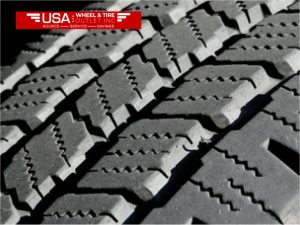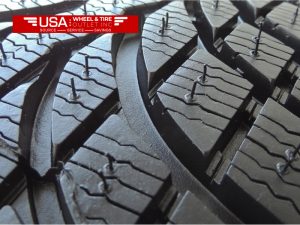Siping the tires is one of the easiest methods, but highly enhances the traction of any vehicle on the road. This would make drivers know how it can give good control, prolong the lifespan of the tire, and allow more safety with the appropriate use of the tools siping a tire. In the next section, the blog will explain what it is called tire siping, how it works, and how it can help tires perform better under tough conditions.
What is Tire Siping?
Tire siping is a process where thin slits are made on the surface of the tire, henceforth called “sipes”. This enables tires to be flexible and create more grip. These small cuts help to develop more gripping edges while increasing traction on icy or slippery surfaces. So, tire siping was more in demand for wet conditions, winter tire maintenance.
Advantages of Tire Siping
Tire siping has many beneficial effects on vehicles, enhancing their performance and safety. Here are the top benefits summarized in detail below:

1.Improved grip on damp and icy roads
The small slits created by tire siping act as additional gripping edges that allow tires to cling to the road more effectively. This is particularly beneficial for drivers who face wet, snowy, or icy roads, as siping improves traction and reduces the risk of slipping.
2. Improved Tire Flexibility
Siped tires are softer and, therefore more flexible to adapt to road surfaces. This flexibility also enhances even pressure distribution and helps reduce tire wear. In this way, it’s a perfect solution for enhancing tire life.
3. Improved Braking
It does not only enhance traction to help accelerate but also brakes better since it has more contact areas with the road; hence, braking distances are considerably shorter, especially in wet or slippery conditions.
4. Less Heat Build-Up
Tires can also generate heat if the traveling is for an extended period, like highway traveling. This is the main issue because tires get drained pretty soon due to excessive heat. Siping can cool down the tire and thus can increase its lifespan because it helps airflow into the minute cuts.
Utilizing the Tire Siping Tool: Step-by-Step Procedure
If you want to sipe your tires by yourself, then a tire siping tool is a must-have. Here’s a very simple guide on how to use this tool properly:

Step 1: Select the Right Tire Siping Tool
Select a good-quality tire siping tool that will give you consistent clean cuts. This is essential in choosing an adjustable blade and a good grip to make it comfortable and easy to use.
Step 2: Prepare Your Tires
Start by cleaning any debris from the tires as this will give you clean cuts. Tires should be partly deflated because when partly deflated, their sidewall will be relatively soft.
Step 3: Plan Your Sipe Pattern
An example would be to make parallel sipes across the tread of the tire to create a balance of grip and durability. Be careful not to cut too deep, as this will weaken the tire.
Step 4: Apply the Siping Technique
Hold the tool steadily and take smooth, shallow cuts along the tread’s surface. Consistency breeds excellent performance. Avoid cutting on the edges; potential damage to the sidewall can result.
Step 5: Inspect Your Work
Once the siping is performed, ensure that the tires have even cuts without any deep cuts accidentally made. Properly siped tires should show an even pattern without damage or compromise of their structure.
Is Tire Siping Suitable for All Types of Tires?
Siping can improve performance for any type of tire, though it is not always the best option for all driving conditions. Here’s how some types of tires improve by siping:
Performance Tires
In Accourd with USA Wheel Tires, Siping improves grip without affecting the handling of the car for the drivers who love speed and agility. Performance tires with siping are good for any type of weather; therefore, they are perfect for enthusiasts looking at having better control during every season.
Winter Tires
The benefits are highest with winter tires, as adding sipes to this type of tire improves its ice and snow traction. In some areas, it’s pretty much a must for such seasons.
All-Season
Siping all seasons may offer better traction with rain or light snow in daily driving. Still, the tire already comes partially siped, so an extra siping is better done carefully.
Pros And Cons Of Tire Siping
Before you decide on tire siping, make sure that you know all the good and bad.
Pros
Cons
Conclusion
Mastery in tire sipping is turning things around for drivers that aim to enhance their performance capabilities, especially in tricky weather conditions. With a perfect tool and technique for the process, you can ensure transformed grip for your tires and also extend their lifespan along with improved safety in your drive. Whether you make use of performance tires, winter tires, or just general all-season tires, this is a sure approach that will give you adequate grip and control on the roads.
Read Also: Best 2.2 Tires for Your RC Crawler: Top Picks
Tire Siping FAQs
Q1: Can I sipe tires at my home?
Yes, if you have the right tool for tire siping and some practice, you can do this in your home garage. If unsure, though, you are best hiring a professional.
Q2: Does tire siping decrease the lifespan of tires?
Done properly, tire siping really adds years to a set of tires because it limits uneven wear. If overdone, though, it will weaken a tire.
Q3: Will tire siping help my gas mileage?
Siped tires can offer a bit better fuel economy. For this reason, the rolling resistance is reduced and the contact between the tire and the road is enhanced. On balance, though, it has a minimal effect.
Q4: Do I need to sipe all-season tires?
Siping can improve traction and most all-season tires come with built-in sipes. More siping could be beneficial for grip but should be done with caution, again.
Q5: Can I sipe my winter tires, or it’s only for performance tires?
Tire siping benefits very much in winter tires and enhances their grip over ice and snow that means greater safety and control of winter conditions.





